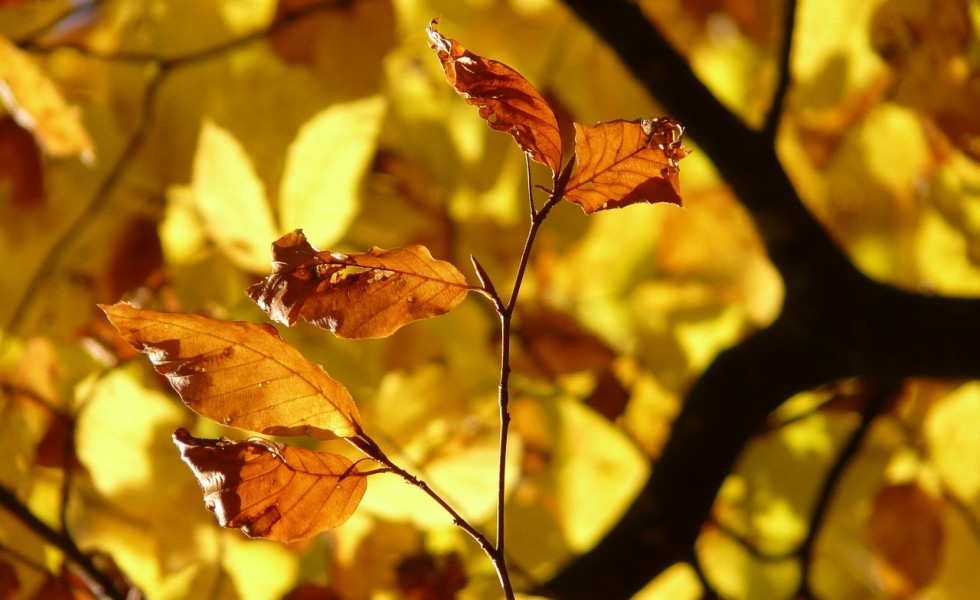Cat’s Feet
Posted on October 5, 2017

The early morning fog, like poet Carl Sandburg once noted, arrived on cat’s feet and remains, napping, on the lake until a warming sun causes it to slip away the way it came, in silence.
Fifty years ago I watched the September fog while waiting for the morning school bus on the southern Illinois dairy farm of my youth. Back then, however, it rested on a chocolate-colored pond that never looked inviting to anything more than a thirsty Holstein heifer.
The bus ride home that afternoon, though, revealed that the morning magic, like Sandburg’s cat, had disappeared and the pond was, again, just a wide trough for thirsty heifers and mud-loving catfish.
September brought other mysteries to our farm. For example, beyond the pond was a tall picket of closely planted cottonwood trees that, fog or no fog, just beckoned young boys like my brother, David, and me. We’d answer it whenever we could sneak away, usually with unsheathed corn knives tucked in our belts, like young Daniel Boones in search of a second Kentucky.
The farm’s grown-ups—my father, his Uncle Honey, and the hired-hand brothers Howard and Jackie—weren’t as enchanted by the shadowy cottonwoods or the quiet beauty of September mornings.
Dad and Howard had good reason to not moon over any dawn. Every sun-up found them in their windowless world of sleepy cows, clacking milking machines, and mugs of hot coffee. After decades of similar, uneventful mornings like that, Dad and Howard hardly noticed any difference between a June or January sunrise anymore.
September brought very different mornings to Uncle Honey and Jackie. Summer’s slow starting, dew-soaked days gave way to the fall’s more pressing, ripening pace and both spent much of September making corn silage: Honey ran the chopper while Jackie brought the silage wagons to the silo blower for unloading.
Oftentimes, while waiting for the bus, I could hear the throaty chopper chewing through silage corn somewhere on the farm as the always more-throttle Honey pushed the machinery to its limit and the always more cautious Jackie shook his head in worried wonder while, at the same time, looking around for cover.
This ritual dance, like Dad and Howard’s in the dairy barn, went on for years with no change and little notice.
But one autumn, the year I went to college, I was startled to learn that I had indeed noticed. After a few weeks of wide-eyed wandering around campus that fall, I was so homesick by mid-September that early one Saturday morning I began to walk the two miles to the university’s dairy farm. There, I hoped, I would find something more tangible than political science and sociology.
When I arrived in the morning’s brightening light, I discovered an entire platoon of Honeys, Jackies, Howards, and Dads milking cows, driving red tractors, and unloading blue silage wagons. Left, right, and center were paddocks of dairy cows and fields of ripening corn.
It was more than a sight for sore eyes; it was a sight seen through the salty fog of boyhood tears. (Two years later I was part of the student dairy crew. The pay was an unimaginable $2.50 per hour, or five times what my father paid. Even more unimaginable, after eight hours of work on Saturday and Sunday, we went home to, I suppose, do “homework.”)
Now all those people and most of those southern Illinois dairy farms, like Honey’s one-row silage chopper and Jackie’s whiskered, worried smile, have slipped into the caressing warmth of memory. There, like many of my memories, they come and go on ageless Oliver tractors in ageless corn silage fields as ageless mourning doves dash and dart above.
And then, like silvery September fog, they, too, slip away in silence.
© 2017 ag comm

Alan, I don’t know exactly what years you were at U of I, but adjusting for that, while you were at the South Farm, I would have been in the English Building on the Quad. As for things bygone, don’t be fooled. Those things look different now, but as Aldo Leopold admonishes us, we should seek to sharpen our powers of perception, so that we can better see what is truly before us. Or, as Willa Cather wrote of the Nebraska sandhills in “O, Pioneers”, “there are only two or three human stories, and they go on repeating themselves as fiercely as if they had never happened before; like the larks in this country, that have been singing the same five notes over for thousands of years.” Enjoy the Autumn. Seventy-one days until the solstice, and then we get to start over again, but who’s counting?